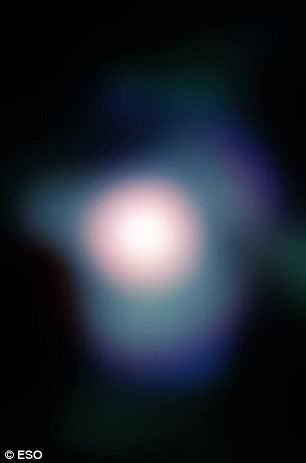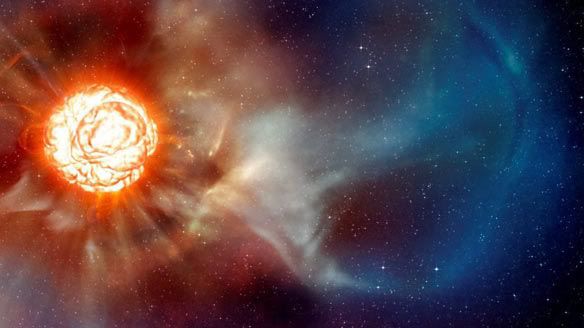Betelgeuse Is Shrinking (approaching supernova?)
Betelgeuse Is Shrinking, Astrophysicists Report
The popular star is puzzling researchers
June 10, 2009
Over the past 15 years, the world-famous star Betelgeuse, after which even cartoons were drawn, has been constantly reducing its size, and astronomers are puzzled at why this is happening. At this point, existing explanations of this phenomenon are unsatisfactory. Overall, experts reported at the 214th meeting of the American Astronomical Society, held in Pasadena, California, the star had registered a significant drop in size, comparable to the distance from where Venus orbits the Sun. Despite this fact, the variations recorded in its brightness levels were not very significant, the scientists said.
“To see this change is very striking. We will be watching it carefully over the next few years to see if it will keep contracting or will go back up in size,” UC Berkeley Professor Emeritus of Physics Charles Hard Townes explains. The expert is known for his work in quantum electronics, and for the fact that he invented the fundamentals of masers (infrared lasers). He also got the Nobel Prize in Physics in 1964, as well as the Templeton Prize back in 2005, LiveScience reports.
Betelgeuse had a radius of about 5.5 astronomical units (AU) in 1993, which means that it was 5.5 times larger than the average distance between the Sun and the Earth, of about 150 million kilometers, or 93 million miles. Since those measurements, the star has contracted significantly, while maintaining roughly the same level of brightness. This type of behavior is very uncommon in a red supergiant such as this one, but some believe that it may be connected to the fact that the star has evolved very rapidly, in only a few million years. They also believe that it will collapse into a supernova soon, in a time frame that will allow for this event to be witnessed by human civilizations.
“But we do not know why the star is shrinking. Considering all that we know about galaxies and the distant universe, there are still lots of things we don't know about stars, including what happens as red giants near the ends of their lives,” UC Berkeley Space Sciences Laboratory Research Physicist Edward Wishnow adds. “Whenever you look at things with more precision, you are going to find some surprises and uncover very fundamental and important new things,” the 94-year-old, who plans to spend the next few years observing the star, explains.
http://news.softpedia.com/news/Betelgeu ... 3760.shtml
Will I read anything funnier today than "world-famous star"?
The popular star is puzzling researchers
June 10, 2009
Over the past 15 years, the world-famous star Betelgeuse, after which even cartoons were drawn, has been constantly reducing its size, and astronomers are puzzled at why this is happening. At this point, existing explanations of this phenomenon are unsatisfactory. Overall, experts reported at the 214th meeting of the American Astronomical Society, held in Pasadena, California, the star had registered a significant drop in size, comparable to the distance from where Venus orbits the Sun. Despite this fact, the variations recorded in its brightness levels were not very significant, the scientists said.
“To see this change is very striking. We will be watching it carefully over the next few years to see if it will keep contracting or will go back up in size,” UC Berkeley Professor Emeritus of Physics Charles Hard Townes explains. The expert is known for his work in quantum electronics, and for the fact that he invented the fundamentals of masers (infrared lasers). He also got the Nobel Prize in Physics in 1964, as well as the Templeton Prize back in 2005, LiveScience reports.
Betelgeuse had a radius of about 5.5 astronomical units (AU) in 1993, which means that it was 5.5 times larger than the average distance between the Sun and the Earth, of about 150 million kilometers, or 93 million miles. Since those measurements, the star has contracted significantly, while maintaining roughly the same level of brightness. This type of behavior is very uncommon in a red supergiant such as this one, but some believe that it may be connected to the fact that the star has evolved very rapidly, in only a few million years. They also believe that it will collapse into a supernova soon, in a time frame that will allow for this event to be witnessed by human civilizations.
“But we do not know why the star is shrinking. Considering all that we know about galaxies and the distant universe, there are still lots of things we don't know about stars, including what happens as red giants near the ends of their lives,” UC Berkeley Space Sciences Laboratory Research Physicist Edward Wishnow adds. “Whenever you look at things with more precision, you are going to find some surprises and uncover very fundamental and important new things,” the 94-year-old, who plans to spend the next few years observing the star, explains.
http://news.softpedia.com/news/Betelgeu ... 3760.shtml
Will I read anything funnier today than "world-famous star"?


